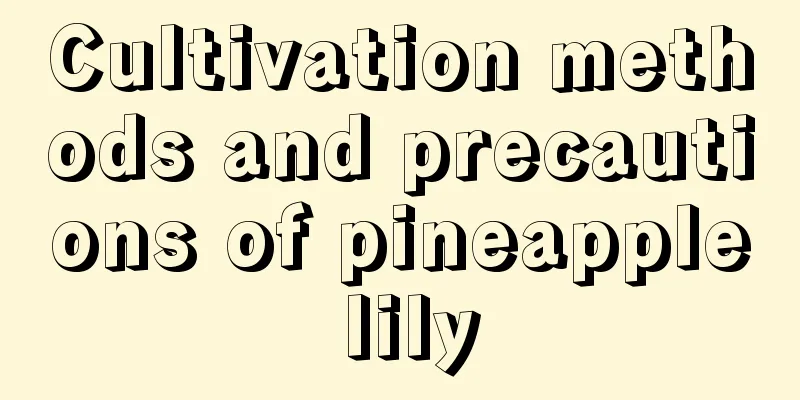When and how to change the soil of camellia

Camellia soil changing timeThe time to change the soil of camellia is generally in spring and autumn. The temperature should not be too high or too low when changing the pot. It should be done when the climate is stable. It is best to change the pot when the temperature is 20℃. Camellia repotting and soil changing method1. When repotting and changing the soil of camellia, you need to prepare suitable potting soil. You can mix organic fertilizer, sawdust, wood ash, coal slag, and garden soil in a ratio of 1:1:1:1:6. The flowerpot you choose should not be too deep. 2. Stop watering two weeks before repotting. Wait until the soil in the pot is dry, then carefully take the camellia out of the old pot, remove the old soil, and cut off the old roots, dead roots, and spiral roots attached to the wall of the pot. 3. Before potting, it is best to disinfect the new pot with potassium permanganate, put broken tiles and stones in the drainage hole, then pour appropriate amount of coal slag or stones, and add some planting soil, then put the camellia plant into the pot, straighten it, fill it with soil, compact it and water it. Matters Needing Attention When Changing the Soil for Camellia1. When changing the soil of camellia, you need to pay attention to watering it less before repotting, so that it will be easier to remove from the pot. After repotting, the potted plant should be placed in a well-ventilated and diffused light place, and it can only be exposed to light after the camellia has adapted to the pot. 2. It is best to use natural red sand soil directly when changing the soil for camellia, or you can make it yourself. You can mix it with organic fertilizer, sawdust, wood ash, coal slag and garden soil. 1. Camellia does not like fertilizer very much, so there is no need to apply too much fertilizer. However, when changing the soil, you can add some farmyard manure as base fertilizer in the pot, such as animal manure, which will help the plant adapt to the pot as soon as possible. Camellia maintenance method after soil change1. Light : Do not expose the camellia to the scorching sun right after changing the soil, otherwise the plant will not adapt to the pot. The camellia should be placed in a cool and well-ventilated place for maintenance, and it does not need to be exposed to the sun for the time being. After it adapts to the pot, it can be placed in a semi-shaded place for maintenance. Exposing the camellia to the sun is beneficial to the growth of the plant. 2. Exposure to the sun : Camellia cannot be exposed to the sun immediately after the soil is changed. It needs to be placed in a cool place for about a week before it can see the sun. 3. Watering : After repotting the camellia, you need to water it thoroughly immediately. This not only allows the camellia to absorb water and replenish it, but also helps to allow the roots to have better contact with the soil, allowing the camellia to adapt to the pot as soon as possible. 4. Yellowing leaves : The leaves of camellia turn yellow after changing the soil. It may be because the time is wrong or the climate environment is not suitable. The leaves will turn yellow. It may also be that the roots are damaged when changing the soil, which will also cause the leaves to turn yellow. If the replaced soil is not suitable, the leaves will also turn yellow. |
<<: How to water black bone tea
>>: Cycas revoluta growth environment conditions and characteristics
Recommend
Can the fruit of yew be eaten?
Can I eat it? The branches, leaves, wood and seed...
How to plant bottle orchid seeds
1. Seed selection If we want to see the life cycl...
Yew cultivation methods and precautions
1. Maintenance methods 1. Temperature: It has ver...
What to do if the leaves of Magnolia turn yellow
The reason for this phenomenon The first is insec...
The whole process of sowing dianthus seeds
Dianthus flowers come in many varieties and rich ...
Soaking my feet in pepper and ginger for a week has led to such a big change in my body...
Soaking your feet in pepper water can dispel cold...
Where is the best place to put a cactus on the balcony?
1. Feng Shui Effect Cactus is not only an ornamen...
The flower language and symbol of wintersweet, the meaning of giving wintersweet to girls
1. Flower Language Wintersweet has many flower me...
What is the best month to plant ginger?
When to plant ginger Ginger is usually planted in...
How and when to plant green onions
Green onion planting time and month When to plant...
How to grow Sophora japonica at home
1. Breeding environment 1. Soil: When growing yel...
Advantages and disadvantages of Ocean Song Rose
The Song of the Sea rose is a cut rose variety fr...
Diseases and Pests of White Peony and Their Control
Diseases and their control on white peony Black r...
When is the best time to prune Desert Rose?
Desert Rose Overview Desert rose prefers high tem...
Identification methods of spatholobus species
Spathiphyllum truncatum The main difference betwe...









